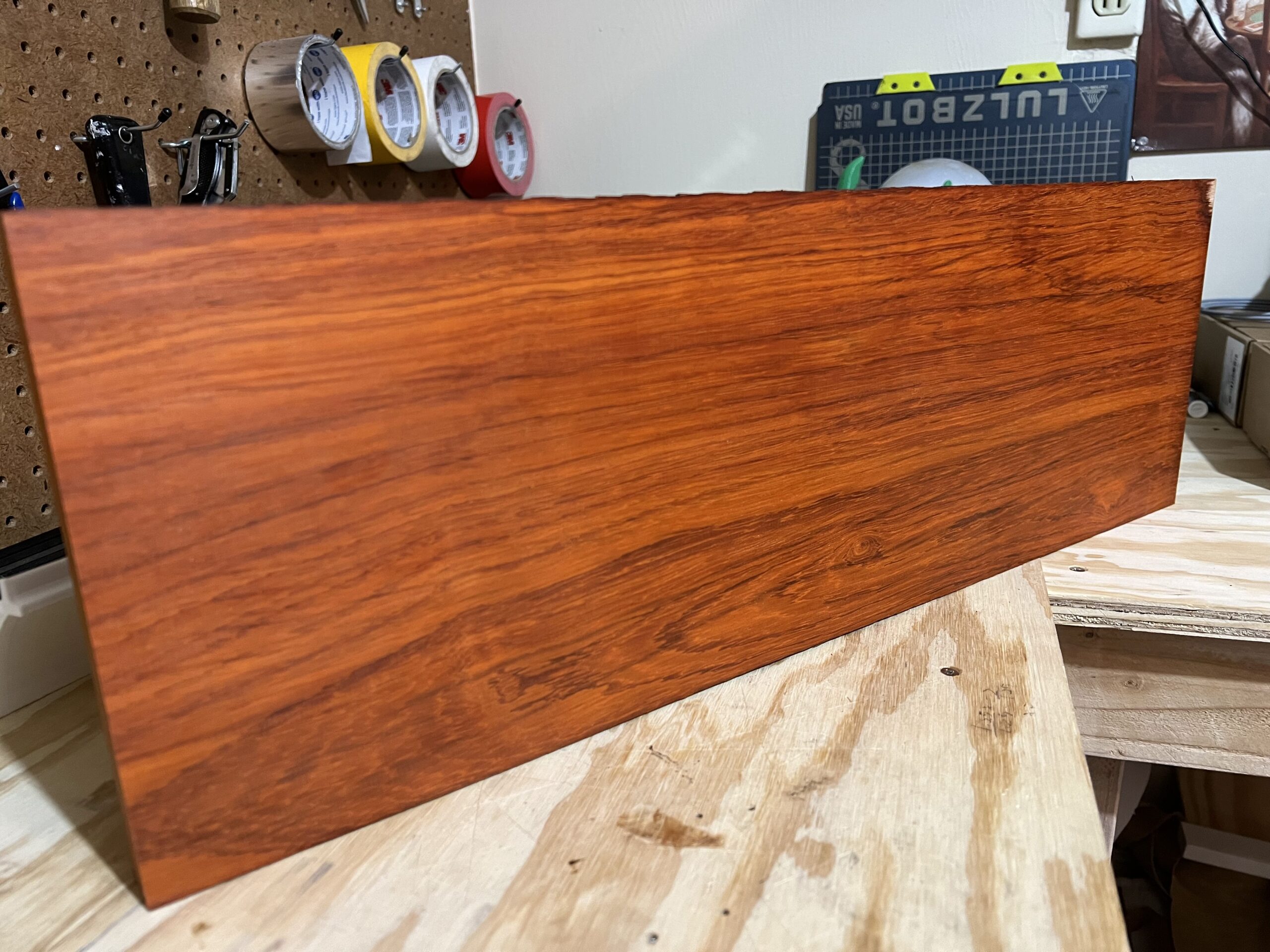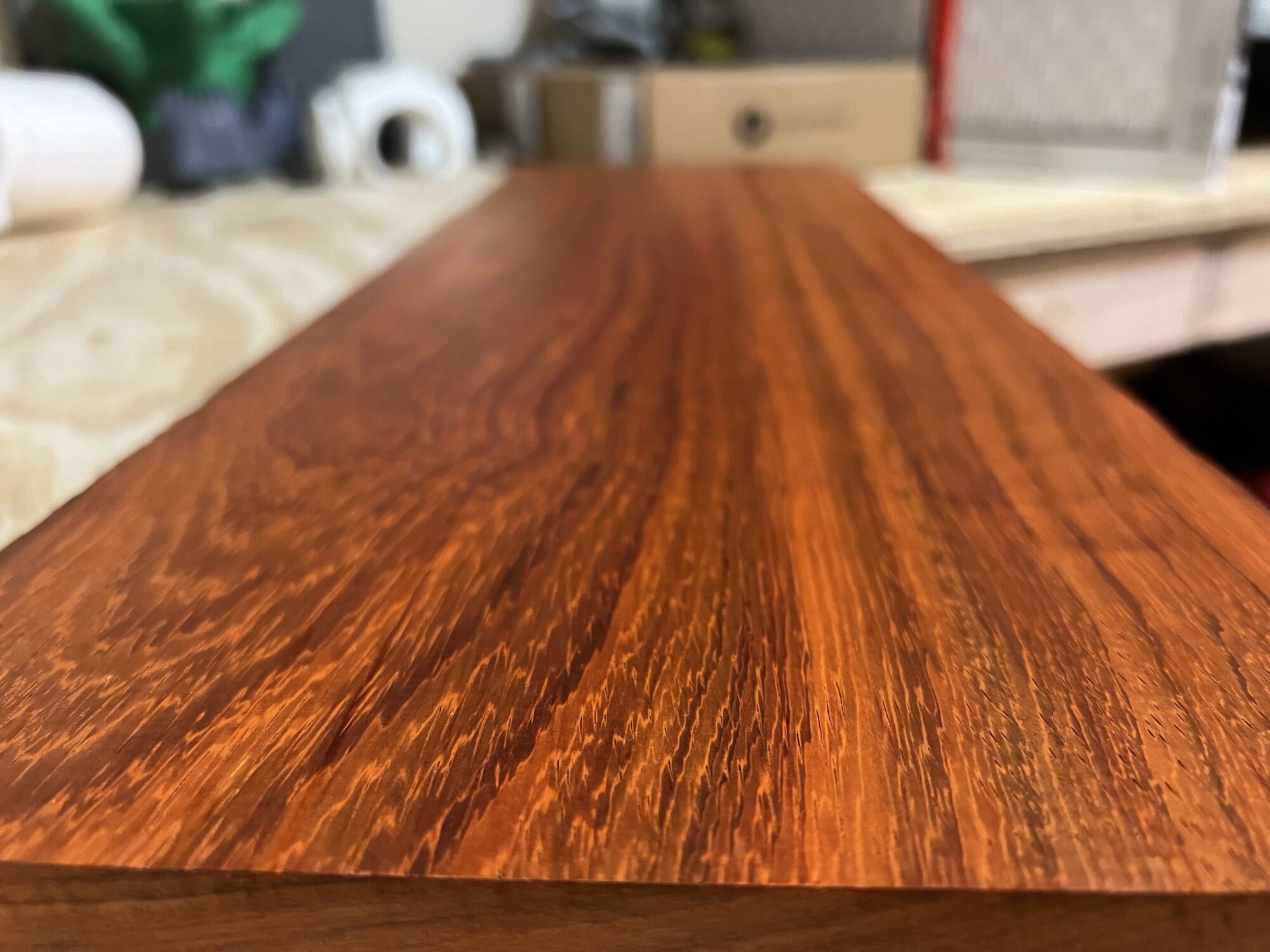To recap, I am making a mid-century modern xylophone. Check out my other posts to see more—I’m making a xylophone with 8 keys, and a box resonator painted a mid-century sage green color.
This last week has gone by very quickly, and so I have had little time to work on the project. I did, however, make it down to Austin Hardwoods in Denver to pick up 2 feet of 4/4 African Padauk (puh-dook) to use to make the keys of the xylophone. This wood is by far one of my favorite types of wood. It has a naturally rich and vibrant orange color, which needs to be protected from UV or else it will slowly turn brown.

Not only is it visually striking, but this wood has physical properties that allow it to work exceptionally well for making xylophone keys. Instrument manufacturers use padauk in their xylophones and marimbas, largely due to the endangerment of Honduran rosewood. I’m hopeful that I can get these keys to sound good enough to perform with. The other nice thing about padauk—it’s really cheap! This cost about $11.50 per board foot, but with a student discount I got out the door with 2 feet for $14.
For next steps, I am probably going to cut out the keys tomorrow. I purchased a guide book that walks you through how to build a xylophone and tune the keys, just so I could get an idea of what size lumber to buy. The website looks like an early 2000s internet scam, but I have actually spoken to the author, Jim McCarthy, a couple times before and I’m familiar with his work. I am definitely going in a different route with my frame. I do, however, like this guy’s use of MDF to build the frame, so I am going to switch over from my original plan of using plywood.
To cut the bars to size, I will likely chop up the board into 1 ¼” strips (the width of the keys) and cut each one to length from there. I will probably have some left over, so maybe I can make use of it somewhere else in the project. I will probably need to cut down the thickness. Since the board is 1″ thick, which is too thick for xylophone keys, I will need to plane them down to around ½”, or maybe slightly thicker depending on how I feel about it.
Overall, I think I am on track to have this thing finished in time for the class expo. Jim seems to think this can be put together in a couple days, but I have a lot more time than that so long as I use it wisely.


3 Comments. Leave new
Hi Josh. I think that is awesome that you were able to find a guide on how to build a xylophone and even talk to the author! I think this project is going to be awesome. Also, that wood is absolutely beautiful. Is there any impact that a clear coat will have on the sound of the xylophone?
Hi Josh, this project is very cool and I think you’ve made a lot of progress. How will you calibrate each part to make a specific note?
Hi Josh,
Making a xylophone sounds really cool. I’m not sure if you have answered this in another post but do you have any previous instrument making experience? Also since you are making 8 keys will you have extra wood to make extra keys?